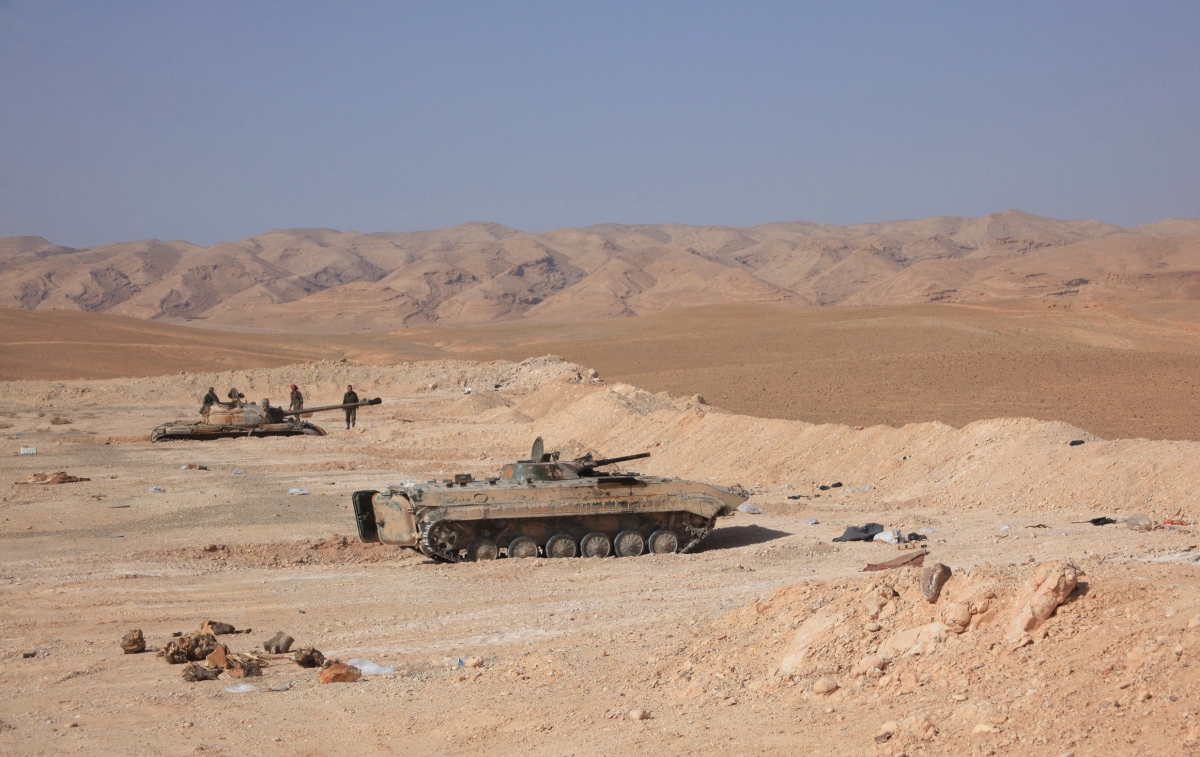Syria: Russian airstrikes target Palmyra as regime set to retake Unesco site from Isis



Regime forces backed by Russian airstrikes were gearing up for an offensive to retake the ancient Syrian city of Palmyra from the Islamic State (Isis). Liberating the Unesco World Heritage site from the jihadi group that deliberately damaged it by blowing up temples and shrines, would be a major propaganda coup for the Kremlin, whose military intervention to shore up Bashar al-Assad has been tainted by high civilian casualties and accusations of war crimes.
Clashes continued in the area on 11 March, following a wave of strikes targeting jihadi positions in the city throughout the week, according to monitoring groups. Russia's state-owned Rossiya television said the regime was massing troops near the frontline in a broadcast report showing pick-up trucks laden with soldiers advancing on a desert road.
Rossiya TV reports on Syrian Army in Palmyra, lots of pickups, a Shilka, and a T-55 https://t.co/ayMRsccNFs pic.twitter.com/E7Fw3cG3L2
— BM-21 GRAD (@bm21_grad) March 10, 2016
A top Syrian army commander, Major-General Suheil al-Hassan, head of the elite Tiger Forces was in charge of operations and Hezbollah militias were also converging in the area, according to pro-government media. Meanwhile Russian warplanes continued to pound the city. The Syrian Observatory for Human Rights (SOHR) said at least 20 IS (Daesh) militants had been killed "in at least 35 airstrikes targeting areas of the city of Palmyra by Syrian and Russian warplanes" on 10 March.
The operation raised concerns for Palmyra's archaeological treasures, as activists denounced Russian bombings which they claimed was causing further damage. Photos circulated online showed dust rising from the 13th century Fakhr-al-Din hilltop castle billowing over the city after an airstrike.
Tens of #Russian air-strikes targeted the archaeological area and #Palmyra Citadel few minutes ago. #Syria , Mar 10 pic.twitter.com/FZLUTaJn3l
— Khaled AL Homsi (@PalmyraPioneer) March 10, 2016
IS had previously destroyed a number of classical monuments it deemed blasphemous symbols of ancient religions. The extremist group systematically blew up ancient temples and tombs, beheading Khaled al-Asaad, the 82-year-old former head of archaeology in the city described by the UN as a site of outstanding value also known as the "Pearl of the Desert".
An ancient metropolis and a caravan hub of several civilisations, Palmyra was full of precious sculptures and artefacts and renowned for its urbanism -- a unique mix of Roman architecture with Greek-Persian and Babylonian influences. It was taken by IS from the government in May 2015, as Assad-forces were on the back foot and the regime's future appeared compromised. The situation radically changed at the end of September, as Russia waded in to support Damascus.
Regime forces have since gained considerable ground seizing back territory from moderate and jihadi rebel groups, although Moscow maintains its operations targeted only terrorist groups. On 27 February most belligerent parties agreed a ceasefire deal but the plan did not include IS and the Al-Qaeda-affiliated Al-Nusra Front, leaving the two Islamist groups as the only legitimate targets. The truce has largely held despite reports of breaches on both sides.
© Copyright IBTimes 2025. All rights reserved.






















